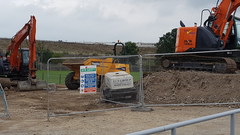Preserving the environment is a central objective of the planning system. However, in one case, the Court of Appeal rejected arguments that an environmental impact assessment (EIA) was required before comparatively modest proposals to build 150 new homes could be granted planning permission.
 The 4.6-hectare proposal site lay on the outskirts of a market town and had in the past been used as a brick quarry and as a recreation ground and stadium. The local authority had twice granted planning consent for its residential development but, on each occasion, the permission was quashed by consent.
The 4.6-hectare proposal site lay on the outskirts of a market town and had in the past been used as a brick quarry and as a recreation ground and stadium. The local authority had twice granted planning consent for its residential development but, on each occasion, the permission was quashed by consent.
An objector subsequently requested an EIA screening opinion from the Secretary of State for Housing, Communities and Local Government. He responded that no EIA was required on the basis that noise, odour, air quality and other environmental impacts of the development were unlikely to be significant. The objector’s judicial review challenge to that decision was dismissed by a judge.
In rejecting his appeal against that outcome, the Court noted that the relatively small proposal was, on any view, routine. The Secretary of State had properly taken into account five other proposed or completed residential developments in the area when considering the cumulative environmental impact of the scheme. He was well aware that there was a designated Air Quality Management Area nearby and the weight that he gave to that factor was a matter for his planning judgment.
Arguments that the land, which had previously been developed and was in an urban area, should have been treated as a greenfield site were contrary to common sense. The precautionary principle did not apply in that both the Secretary of State and the council were sure that the proposed development was not likely to lead to significant environmental effects. The Court concluded that criticisms of the Secretary of State’s reasoning were, in the end, unduly forensic and nit-picking.



